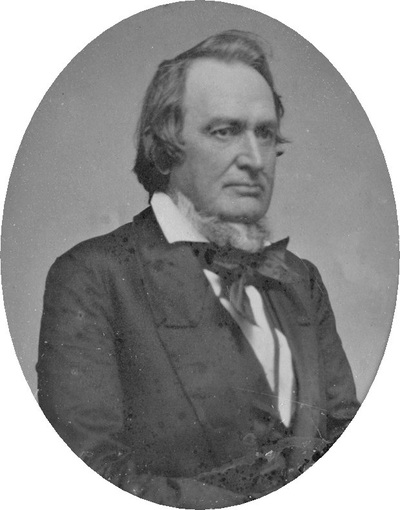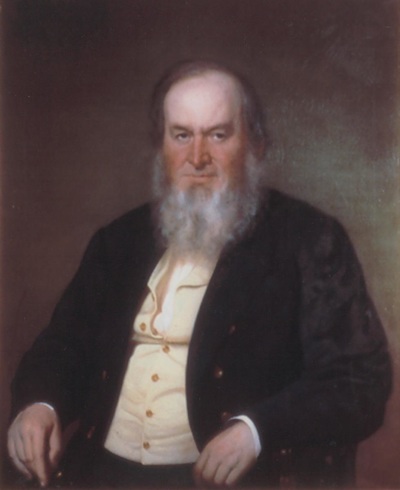- Guided Tours
- Self Guide Smartphone Tour
-
Revere Bells Index
- The Stickney Revere Bell Listings of 1976
- Ashby Mass. Revere Bell
- Paul Revere Bell of Beverly
- Revere Bells in Boston >
- California's 2 Paul Revere Bells
- Paul Revere & Son's Bell Westborough Massachusetts
- Falmouth, Massachusetts
- Revere Bell Fredericksburg VA
- Revere Bell Hampton NH
- First Parish Church of Kennebunk
- Revere Bells in Maine
- Revere Bell in Mansfield
- Revere Bell of Michigan
- Revere Salem Mass Bell
- Roxbury First Unitariarn Universalist Church and their Revere Bell
- Revere & Son Bell, Savannah Georgia
- Singapore Revere Bell
- Tuscaloosa Bell >
- Revere Bells Lost in Time
- Revere Bells Washington DC
- Revere Bell in Wakefield, Mass
- Revere Bells Woodstock VT
-
Bostonians
- Edward F Alexander of The Harvard 20th Civil War Regiment
- Polly Baker
- John Wilkes Booth
- The Mad Hatter, Thomas, Boston Corbett who Killed John Wilkes Booth
- Richard-Henry-Dana-Jr
- James Franklin
- Benjamin Harris of Publick Occurrences
- Oliver Wendell Holmes, Jr.
- William Lloyd Garrison
- USS Thomas Hudner DDG116
- Edward Hutchinson Robbins Revere
- Amos Lincoln
- King Philip
- Mayor's of Boston
- Mum Bett & Theodore Sedgwick
- James Otis
- Paul Joseph Revere
- Reverend Larkin's Horse
- John Rowe >
- Be Proud to be Called a Lucy Stoner
- Rachel Wall , Pirate
- Paul Revere the Coroner of Boston
- Deborah Sampson
- Who was Mrs. Silence Dogood?
- Dr. Joseph Warren's Dedication
- History Blog
- Lilja's of Natick
-
Collage of Boston
- 4th of July Parade, Bristol RI
- Boston Harbor
- The Customs House
- Forest Hills Cemetery
- Georges Island
- Nonviolent Monument to Peace - Sherborn
- The Battle Road
- Skate bike and scooter park
- Cassin Young & USS Cassin Young
- MIT
- Historic Charles River
- The Roxbury Standpipe on Fort Hill
- John & Abigail Adams National Park
- Boston's Racial History - Ante-Bellum
- New Page
|
1797-1874 Prior to the raid on Harpers Ferry John Brown often met with the Secret Six in Boston to finance his deadly expedition. The Secret Six were five existentialists from Boston[i] and one New Yorker, Gerrit Smith. In one combination or other the Six were radical abolitionists, social reformers, educators, transcendentalists and wealthy. The five that lived beyond the Civil War all prospered, even in exile. All of the six supported the Suffrage and Temperance Movement and Gerrit showed his commitment by building a temperance hotel. In 1848 Gerrit ran for President of the United States under the Liberty Party platform. His plank called for universal suffrage. The plank did not discuss slavery suggesting that the U.S. Constitution addressed it. Yet, many other abolitionists were now beginning to view the Constitution as a pro-slavery document. He lost his run for the Presidency but in 1852 was elected to the U. S. House of Representatives. Gerrit established a legal fund to support those arrested under the 1850 Fugitive Slave Law. He further supported the relocation, to Kansas, of immigrants that would vote against slavery in the coming referendum of 1854. He was the major financier behind the New York Central College; a racially integrated institution. John Brown spent two years in Boston soliciting support from the Secret Six for his Harpers Ferry expedition. The Six generally met at the Parker House on School Street where Brown often roomed. In this time-frame Gerrit donated land in upstate New York and funds to support John Brown’s large family. The flow of funds for the Brown family implicated Gerrit in the treasonous raid on Harpers Ferry. General historical opinion suggested that Gerrit knew the funds would be used to purchase arms. Shortly after the raid Gerrit appeared to suffer mentally and was confined to an asylum in Utica, NY. He was never tried for treason although he always expected it. Gerrit often felt his abolitionist activity and the Harpers Ferry raid brought on the Civil War. Consequently, he worked tirelessly in reform movements after the war. He sided with Lucy Stone and differed with Susan B. Anthony and Elizabeth Stanton, placing black voting rights before the woman’s right to vote.[ii] To put a cap on his life, he along with several wealthy gentlemen from Richmond signed the bail bond to release Jefferson Davis, the imprisoned President of the Confederate States. It is estimated that his charitable donations exceeded eight-million dollars.[iii] Please see our blog on Franklin Benjamin Sanborn of the Secret Six and Concord Massachusetts. Bibliography The secret six : the true tale of the men who conspired with John Brown / Edward J. Renehan, Jr. / Edward J. Renehan, Jr Renehan, Edward, 1956- | Crown Publishers | c1995. | 1st ed. [i] Thomas Wentworth Higginson, Samuel Gridley Howe, Theodore Parker and Franklin Benjamin Sanborn (blogged 9/25/2016) [ii] http://www.nyhistory.com/gerritsmith/smith.htm [iii] https://en.wikipedia.org/wiki/Gerrit_Smith
0 Comments
Leave a Reply. |
Categories
All
Archives
February 2020
|
- Guided Tours
- Self Guide Smartphone Tour
-
Revere Bells Index
- The Stickney Revere Bell Listings of 1976
- Ashby Mass. Revere Bell
- Paul Revere Bell of Beverly
- Revere Bells in Boston >
- California's 2 Paul Revere Bells
- Paul Revere & Son's Bell Westborough Massachusetts
- Falmouth, Massachusetts
- Revere Bell Fredericksburg VA
- Revere Bell Hampton NH
- First Parish Church of Kennebunk
- Revere Bells in Maine
- Revere Bell in Mansfield
- Revere Bell of Michigan
- Revere Salem Mass Bell
- Roxbury First Unitariarn Universalist Church and their Revere Bell
- Revere & Son Bell, Savannah Georgia
- Singapore Revere Bell
- Tuscaloosa Bell >
- Revere Bells Lost in Time
- Revere Bells Washington DC
- Revere Bell in Wakefield, Mass
- Revere Bells Woodstock VT
-
Bostonians
- Edward F Alexander of The Harvard 20th Civil War Regiment
- Polly Baker
- John Wilkes Booth
- The Mad Hatter, Thomas, Boston Corbett who Killed John Wilkes Booth
- Richard-Henry-Dana-Jr
- James Franklin
- Benjamin Harris of Publick Occurrences
- Oliver Wendell Holmes, Jr.
- William Lloyd Garrison
- USS Thomas Hudner DDG116
- Edward Hutchinson Robbins Revere
- Amos Lincoln
- King Philip
- Mayor's of Boston
- Mum Bett & Theodore Sedgwick
- James Otis
- Paul Joseph Revere
- Reverend Larkin's Horse
- John Rowe >
- Be Proud to be Called a Lucy Stoner
- Rachel Wall , Pirate
- Paul Revere the Coroner of Boston
- Deborah Sampson
- Who was Mrs. Silence Dogood?
- Dr. Joseph Warren's Dedication
- History Blog
- Lilja's of Natick
-
Collage of Boston
- 4th of July Parade, Bristol RI
- Boston Harbor
- The Customs House
- Forest Hills Cemetery
- Georges Island
- Nonviolent Monument to Peace - Sherborn
- The Battle Road
- Skate bike and scooter park
- Cassin Young & USS Cassin Young
- MIT
- Historic Charles River
- The Roxbury Standpipe on Fort Hill
- John & Abigail Adams National Park
- Boston's Racial History - Ante-Bellum
- New Page



 RSS Feed
RSS Feed